What’s Good for the Planet and for the Labor Market Too?
The solar industry is not just generating electricity
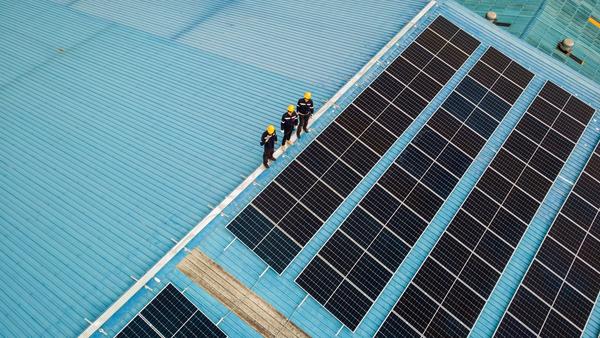
Renewable sources are becoming an increasingly important provider of energy and jobs in the United States, rapidly displacing fossil fuels as the largest employer of workers in power generation.
Solar energy has been a massive job creator in recent decades, outpacing wind and creating an extensive workforce, with jobs especially concentrated in southwestern states and Vermont.
The structure of the solar energy industry, driven by direct-to-consumer sales and installation, has led to a surge in employment—something that even an administration skeptical of climate policy may want to continue to foster.
What’s good for the planet and great for job creation? Solar energy.
The U.S. Energy Information Administration projects that renewable energy will supply 44% of total U.S. electricity by 2050. This is driven by policy initiatives that include generous federal and state subsidies like tax credits, increasing user demand for greener energy options, and technological advancements, which have drastically reduced the cost of producing energy. For instance, the cost of solar power has fallen dramatically over the last decade, with the cost per kilowatt-hour dropping by 90% since 2010. In today’s newsletter, we use Revelio Labs’ workforce data to examine whether, along with an increased market share, the renewable energy sector is also taking the lead in generating jobs for the U.S. economy.
We start by analyzing how employment at U.S. energy companies has changed in the last few years. Over the last decade, the renewable energy workforce has rapidly expanded. While in 2008 fossil fuels dominated, employing almost 60% of the U.S. power generation workforce, its headcount share has been steadily declining. As of November 2024, over half of U.S. jobs in power generation are in renewable energy, a milestone achieved largely by the rapid growth of the solar industry.

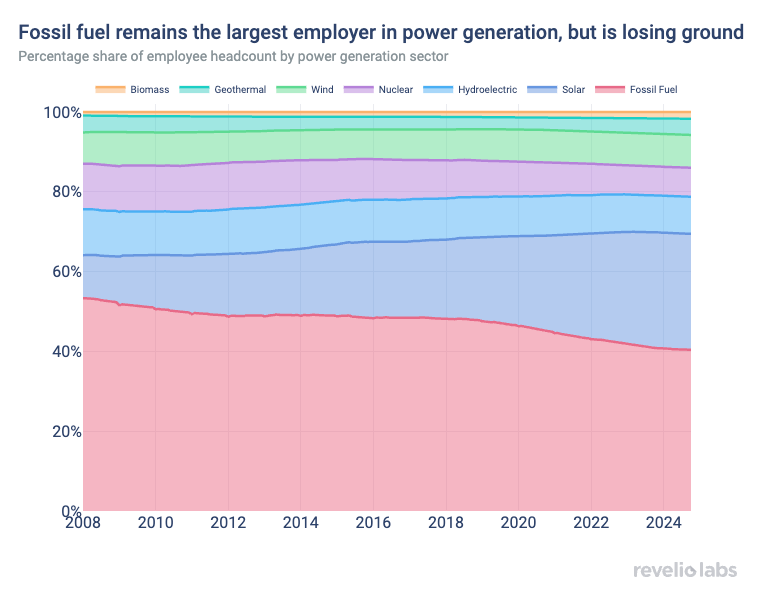
Diving further into employment trends for solar, wind and coal workers, we observe that the solar workforce stands out for both its size and growth rate. Since January 2009, the solar industry has grown its workforce by roughly 130%, more than 4 times the pace of the wind industry. Conversely, the number of workers in coal has decreased relative to 2009 levels.
This rapid expansion reflects the declining cost of solar technology, widespread policy support, and the industry's ability to scale to meet growing consumer demand. Additionally, solar energy is generally a more labor-intensive industry, requiring more workers for installation, maintenance, and customer-facing sales and support roles than wind and coal.

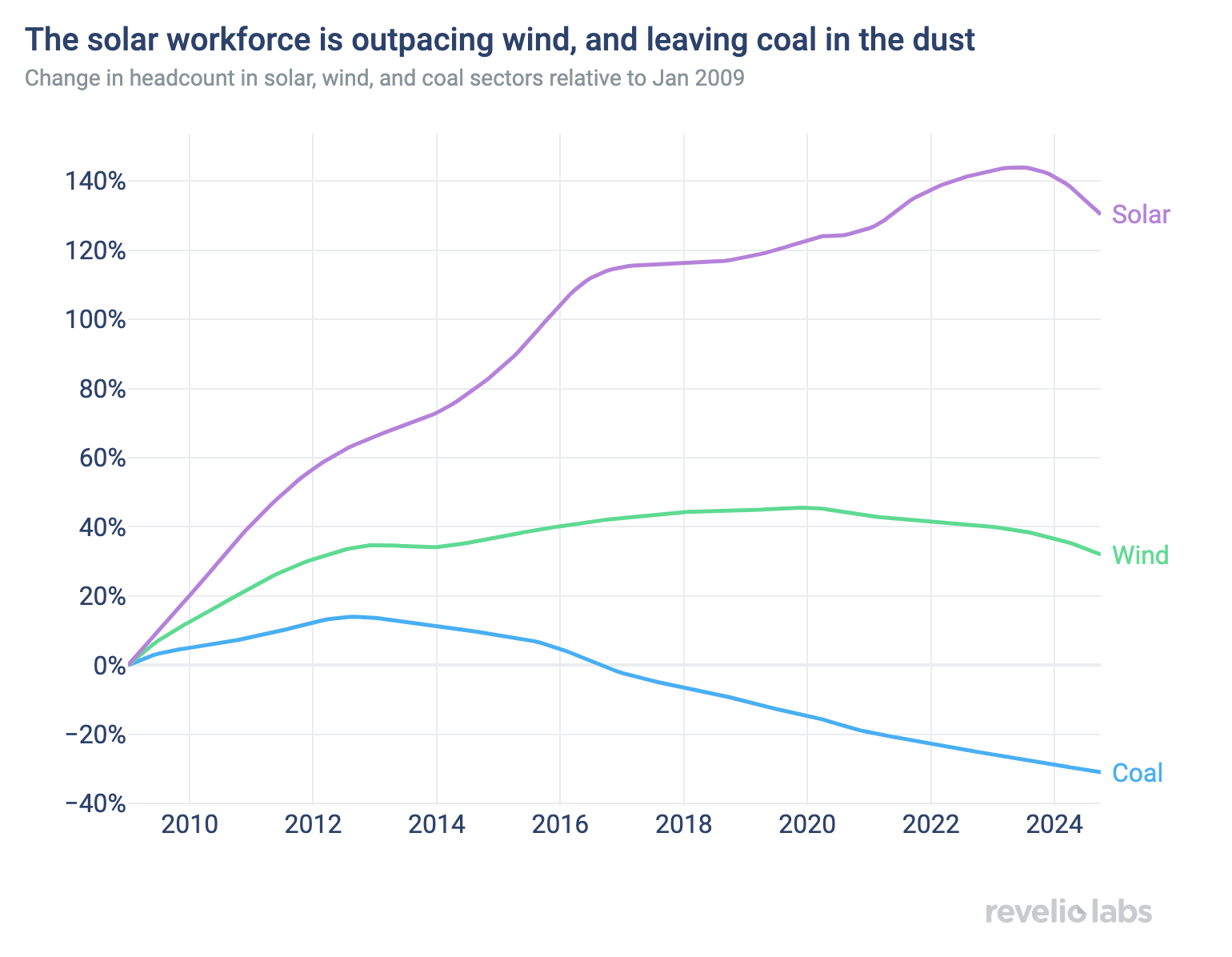
Next, we look into which U.S. states are betting on the expansion of their solar workforce. The concentration of solar jobs is not uniquely driven by environmental factors but instead reflects a combination of both geography and policy. While many of these jobs are unsurprisingly located in the sunniest regions of the U.S., such as Arizona, New Mexico, and Nevada, Vermont also stands out as a solar workforce leader despite its northern climate, due to policies supporting renewable energy adoption. Vermont’s small but vibrant solar workforce demonstrates how state-level policies can drive renewable energy employment regardless of geography.

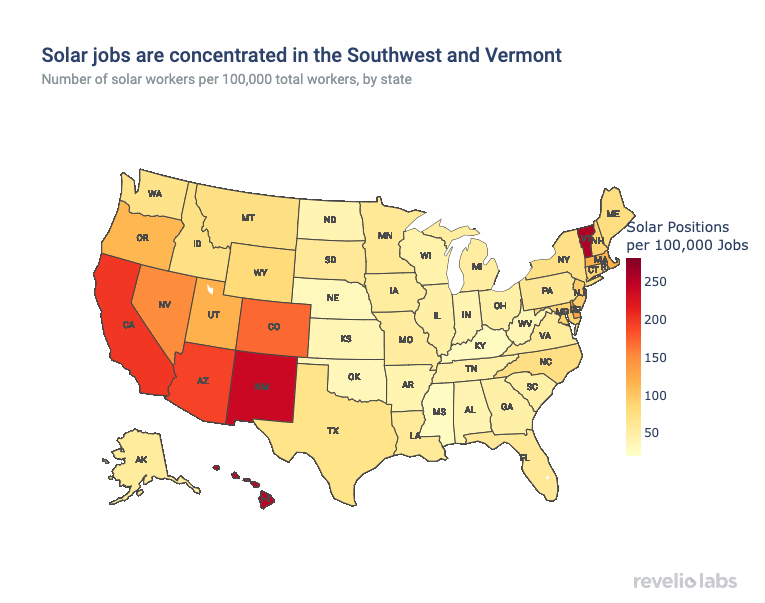
The industry’s reliance on direct-to-consumer sales models also drives significant job creation. Companies selling panels directly to homeowners or businesses require large teams for customer support, sales, marketing, and installation, boosting the number of administrative and sales roles within the solar workforce. In fact, rapid growth in the number of Sales Representatives has led to this type of role becoming the most common in the industry, surpassing engineering and scientific positions. This shift in the workforce composition suggests that solar has moved into the post-development phase, with a greater focus on commercialization and customer support.
Sign up for our newsletter
Our weekly data driven newsletter provides in-depth analysis of workforce trends and news, delivered straight to your inbox!

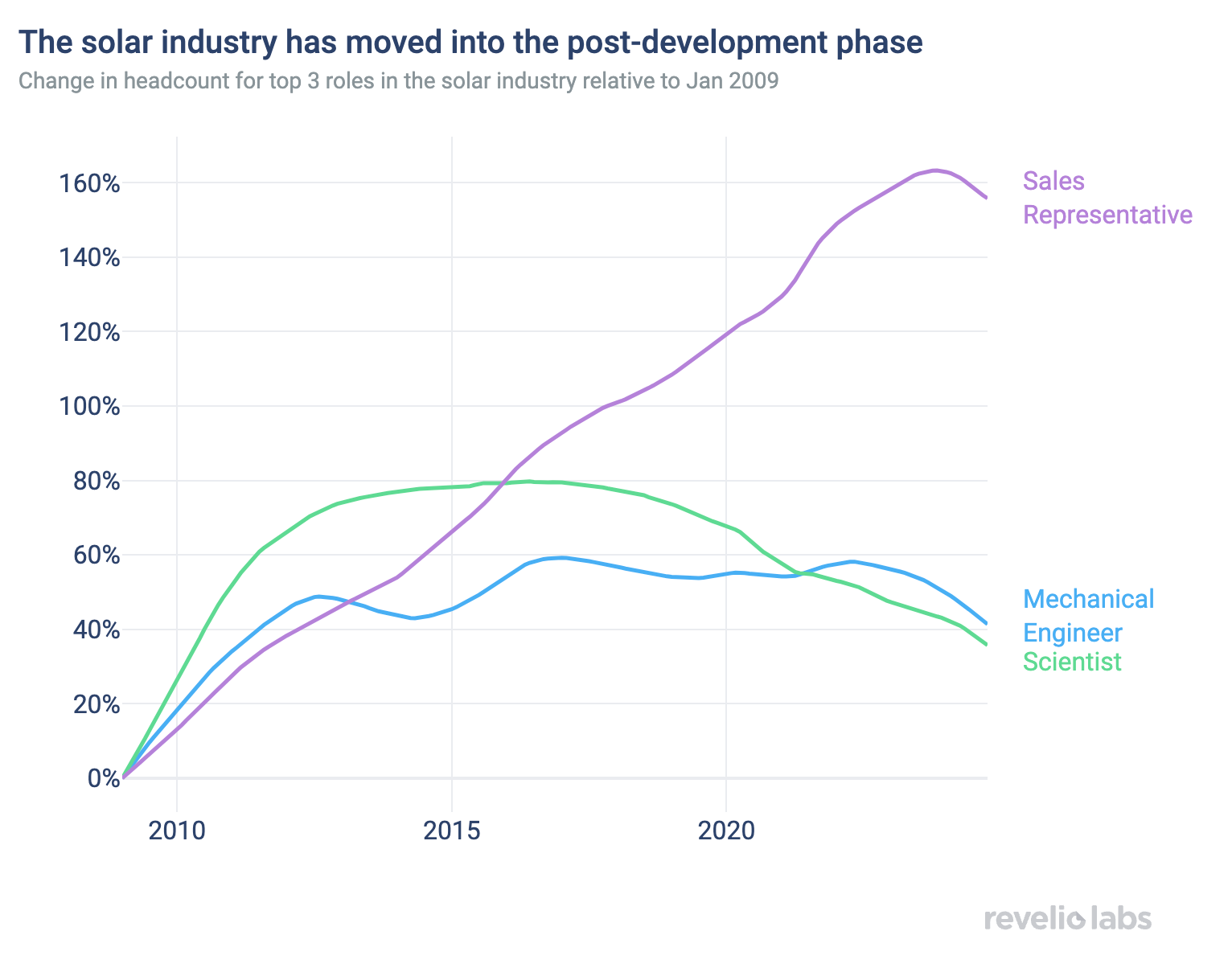
Renewable energy, and solar power in particular, has been a powerful job creator in the U.S. As fossil fuel employment wanes, the renewable energy sector continues to rise, offering new opportunities for workers and a pathway to a more sustainable economy. While renewable energy remains politically divisive, job creation is a universally appealing benefit.That said, future growth depends on policy stability. For example, the incoming Trump administration has expressed interest in repealing or scaling back the Inflation Reduction Act (IRA), which provides billions of dollars for renewable energy projects. While such policies may face political resistance, the solar industry’s strong record of job creation could be a compelling argument to preserve or expand renewable energy investment.


